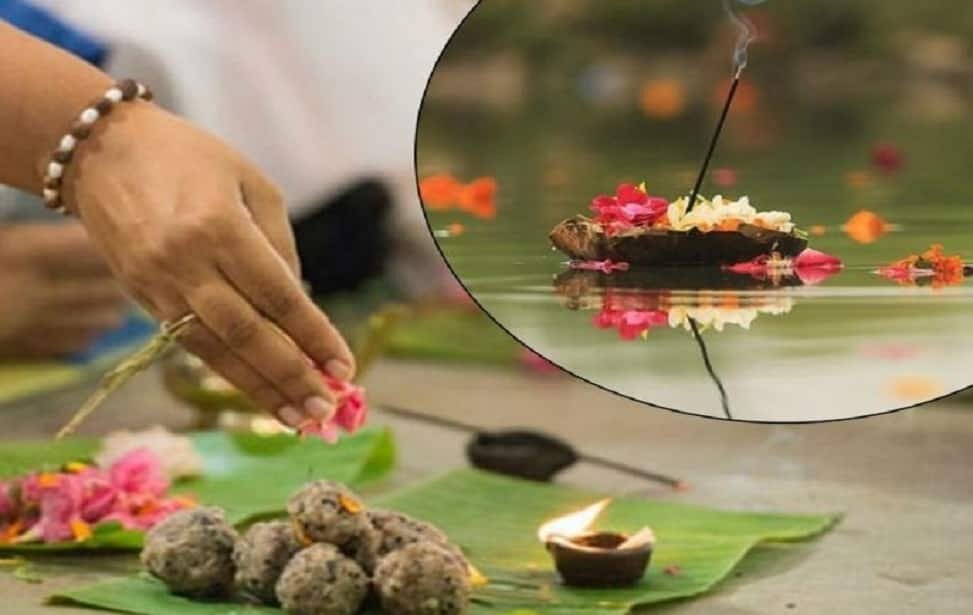Pitru Paksha Puja at Home: A Step-by-Step Guide
- Home
- How To Do Pitru Paksha Puja At Home
Pitru Paksha is a sacred period in the Hindu calendar when families pay homage to their departed ancestors. This ritual, known as Shraddha or Pitru Paksha, is performed to express gratitude, seek blessings, and ensure peace for the souls of ancestors. Traditionally conducted at pilgrimage sites, this ritual can also be performed at home with proper reverence and attention to the required rituals. In this guide, we will walk through how to perform the Pitru Paksha Puja at home.

What is Pitru Paksha?
Pitru Paksha is a 16-day period during the lunar month of Bhadrapada (September-October) when Hindus honor their deceased ancestors. The belief is that during this time, the souls of the departed come down to the earthly plane to accept the offerings made by their descendants. Performing these rituals helps to appease the ancestors, ensuring peace in the afterlife and blessings for the family. This practice is deeply rooted in Hindu traditions and is a way to show respect for the family lineage.
Preparation for Pitru Paksha Puja at Home
1. Choosing the Right Day
Pitru Paksha rituals are performed according to the lunar calendar. It is important to select the tithi (lunar day) that corresponds to the death anniversary of your ancestor, known as the Shraddha tithi. If you are unsure of the exact date, the last day of Pitru Paksha, known as Sarva Pitru Amavasya, can be used to perform the rituals for all ancestors collectively.
2. Purification and Preparation
- Clean the Home: Ensure that the house is clean and tidy as you are inviting the spirits of your ancestors.
- Purification of Self: Those performing the ritual should take a bath and wear clean traditional clothes, preferably white or yellow, symbolizing purity and devotion.
- Setting the Altar: Create a small altar or sacred space in the home. Place photographs of your ancestors or a simple representation (like a name written on a piece of paper) on the altar. Decorate the area with flowers, particularly white flowers, which symbolize peace.
3. Gather the Essentials
You will need the following items:
- Pinda (rice balls mixed with sesame seeds, barley, and ghee)
- Water
- Black sesame seeds (til)
- Barley
- Milk
- Fruits
- Flowers (white)
- A brass or copper vessel for offering water
- Incense sticks and oil lamps
- Cow dung cakes (optional)
The Pitru Paksha Rituals
1. Sankalpa (Resolve)
Begin the ceremony with a Sankalpa (a vow or intent) to perform the ritual with pure devotion. Sit facing south, as this direction is associated with Yama, the god of death. Recite the following prayer: “Om, I am performing this Shraddha for my ancestors (mention their names), may their souls rest in peace, and may they grant their blessings to our family.”
2. Offering of Pinda (Pind Daan)
- Take small portions of cooked rice, mix them with sesame seeds, ghee, and barley, and shape them into small round balls called Pindas. These represent the physical body and nourishment for the ancestors.
- Offer these Pindas on banana leaves or a clean plate, while reciting mantras or prayers. If you are unfamiliar with the mantras, you can simply say the names of the ancestors and offer your respects with heartfelt devotion.
3. Tarpana (Water Offering)
- Fill a brass or copper vessel with water, adding black sesame seeds and a few barley grains.
- While facing south, pour the water slowly into the ground or a plant while reciting the Tarpana mantras or the names of the ancestors. The water is offered as a symbol of nourishment and satisfaction for the souls.
- If the rituals are being conducted for all ancestors collectively, you can offer the water three times, once for each generation: your father’s, grandfather’s, and great-grandfather’s.
4. Feeding the Brahmins or Crows
- Traditionally, after offering food to the ancestors, a portion is given to Brahmins or priests as a gesture of charity. However, if this is not possible at home, you can offer food to crows, as they are believed to represent messengers of Yama and ancestors.
- Place the prepared food outside and observe. If a crow partakes of the food, it is considered an auspicious sign that your offering has been accepted by the ancestors.
5. Offering Food to Family Members
- After the rituals, serve the food that has been prepared for the ancestors to family members. Sharing this meal symbolizes the blessings of the ancestors being passed on to the family.
- Ensure that the meal is satvik (pure) and vegetarian, with no onions or garlic, as these are considered tamasic (impure) during Shraddha rituals.
Mantras for Pitru Paksha Puja
If you are not familiar with the complex mantras typically recited during Pitru Paksha, here is a simplified prayer you can offer: “Om, I offer this food and water to my ancestors. May their souls rest in peace and grant us their blessings.”
Even reciting the Gayatri Mantra or simple prayers in remembrance of the ancestors will suffice if performed with sincerity and devotion.
Post-Ritual Observances
1. Charity and Donations
- It is customary to donate food, clothes, or money to the needy after the Shraddha ceremony. This act of charity, called daan, is believed to further please the ancestors and earn their blessings.
- Donations of cow dung cakes, sesame seeds, and food grains are also considered auspicious during Pitru Paksha.
2. Fasting
- Many families observe a fast on the day of the ritual, consuming only one meal after the ceremony. If you choose to fast, the meal should be simple, consisting of fruits, milk, and rice.
The Importance of Narayana Nagbali Pooja in Gokarna
While performing Pitru Paksha at home is an effective way to honor your ancestors, some rituals like Narayana Nagbali Pooja are best conducted at specific pilgrimage sites. One such site is Gokarna, a sacred town located in Karnataka, India.
Narayana Nagbali Pooja is a powerful remedy performed to release ancestral curses and bring peace to the souls of ancestors who may have died unnatural deaths. It is also performed to resolve any karmic imbalances related to ancestral souls. Gokarna is one of the most revered places to conduct this ritual, as it is believed that the spiritual energy of the place amplifies the effect of the ritual, granting salvation to the departed souls.
This ritual is highly recommended for families seeking to relieve ancestral issues that may be affecting their present-day lives, including financial troubles, health problems, and disharmony within the family. Conducting this pooja in Gokarna with the help of experienced priests can ensure that the ancestral souls find peace and grant blessings to the family.
Conclusion
Pitru Paksha Puja at home is a heartfelt way to express love, gratitude, and respect for your ancestors. By following the rituals of Pind Daan and Tarpana, you can ensure peace for the departed souls and receive their blessings. While performing these rituals at home is auspicious, it’s also advisable to visit sacred sites like Gokarna to perform Narayana Nagbali Pooja, especially if there are unresolved ancestral issues.
For more details or to book a Narayana Nagbali Pooja at Gokarna, reach out to our expert team who can guide you through the entire process. Reconnect with your ancestral heritage and bring peace and harmony to your family today.

